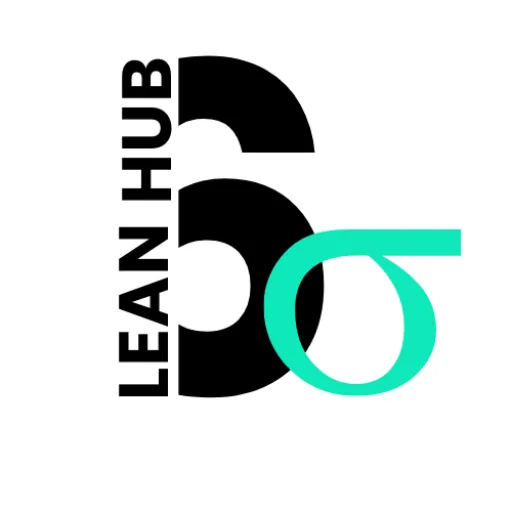Streamlining Your Life: The Power of Sorting and Eliminating
As we embark on the journey of streamlining our lives, we quickly realize that the benefits are both profound and far-reaching. Streamlining is not merely about decluttering our physical spaces; it extends to our mental, emotional, and financial realms as well. By simplifying our surroundings and routines, we create an environment that fosters clarity and focus.
This newfound clarity allows us to prioritize what truly matters, leading to increased productivity and a greater sense of fulfillment. When we streamline, we often find that we have more time and energy to devote to our passions and relationships, ultimately enhancing our overall quality of life. Moreover, streamlining can significantly reduce stress.
In a world that often feels chaotic and overwhelming, simplifying our lives can provide a much-needed respite. When we eliminate unnecessary distractions and commitments, we create a sanctuary where we can recharge and reflect. This process not only helps us manage our time more effectively but also cultivates a sense of peace and well-being.
As we embrace the benefits of streamlining, we begin to understand that it is not just a one-time effort but a continuous practice that can lead to lasting change.
Key Takeaways
- Streamlining can lead to increased efficiency, reduced stress, and improved productivity in all areas of life.
- Identifying areas for streamlining involves evaluating processes, systems, and habits to determine where improvements can be made.
- Prioritizing and organizing tasks is essential for effective streamlining, helping to focus on what is most important and eliminate unnecessary activities.
- Letting go of unnecessary clutter, whether physical, mental, or emotional, can create space for more meaningful and fulfilling experiences.
- Streamlining finances involves creating a budget, tracking expenses, and finding ways to cut costs, ultimately leading to better financial stability and freedom.
Identifying Areas for Streamlining
To embark on our streamlining journey, we must first identify the areas in our lives that require attention. This process begins with self-reflection and an honest assessment of our current circumstances. We can start by examining our physical spaces—our homes, offices, and even digital environments.
Are there items that no longer serve a purpose? Are there areas that feel cluttered or overwhelming? By taking stock of our surroundings, we can pinpoint specific areas that need decluttering and organization.
Beyond the physical realm, we should also consider our daily routines and commitments. Are there activities that drain our energy without providing any real value? Are we overcommitting ourselves to social obligations or work tasks that do not align with our goals?
By evaluating how we spend our time, we can identify opportunities for streamlining that will lead to a more balanced and fulfilling life. This process of identification is crucial; it lays the groundwork for the changes we will implement as we move forward.
The Art of Sorting: How to Prioritize and Organize
Once we have identified the areas in need of streamlining, the next step is to master the art of sorting. This involves prioritizing what is essential and organizing our belongings or tasks accordingly. We can begin by categorizing items into three groups: keep, donate/sell, and discard.
This method allows us to make clear decisions about what truly adds value to our lives. As we sort through our possessions, we may find that many items hold sentimental value but no longer serve a practical purpose. In these cases, we can take photos or create a memory box to preserve the sentiment while letting go of the physical item.
In addition to sorting physical items, we must also apply this principle to our schedules and commitments. We can create a list of tasks or obligations and rank them based on urgency and importance. By focusing on high-priority items first, we can ensure that our time is spent on what truly matters.
This prioritization not only helps us stay organized but also reduces feelings of overwhelm as we tackle one task at a time. As we refine our sorting skills, we will find ourselves better equipped to maintain an organized and streamlined life.
The Power of Elimination: Letting Go of Unnecessary Clutter
| Metrics | Results |
|---|---|
| Number of items decluttered | 150 |
| Space freed up | 200 square feet |
| Time saved on cleaning | 2 hours per week |
| Reduction in stress levels | 30% |
Elimination is a powerful tool in the streamlining process. It requires us to confront the attachments we have to material possessions, commitments, and even relationships that no longer serve us. Letting go can be challenging; it often involves facing feelings of guilt or fear of missing out.
However, as we practice elimination, we begin to understand that holding onto unnecessary clutter only weighs us down.
By releasing these burdens, we create space for new opportunities and experiences. In our physical spaces, this might mean parting with clothing that no longer fits or items that have been collecting dust for years.
In terms of commitments, it could involve saying no to social events that drain our energy or stepping back from responsibilities that do not align with our goals. We must also consider relationships—are there individuals in our lives who bring negativity or toxicity? By eliminating these influences, we create a healthier environment for ourselves.
The power of elimination lies in its ability to free us from the past and empower us to embrace a more intentional future.
Streamlining Your Finances: Budgeting and Cutting Costs
Streamlining extends into our financial lives as well, where budgeting and cutting costs play crucial roles in achieving financial stability and peace of mind. We can start by creating a comprehensive budget that outlines our income, expenses, and savings goals. This process allows us to gain a clear understanding of where our money is going and identify areas where we can cut back.
By tracking our spending habits, we can make informed decisions about what is necessary versus what is discretionary. In addition to budgeting, we should also explore ways to reduce costs without sacrificing quality of life. This might involve reevaluating subscriptions or memberships that are no longer used or finding more affordable alternatives for everyday expenses.
We can also consider adopting a minimalist approach to spending—prioritizing experiences over material possessions. By streamlining our finances, we not only alleviate financial stress but also create a foundation for future growth and security.
Streamlining Your Schedule: Time Management and Prioritization
Blocking Out Time for Tasks and Activities
One approach is to block out specific times for tasks or activities, creating dedicated periods for work, relaxation, and personal pursuits. We can also utilize tools such as calendars or productivity apps to help us stay organized and accountable.
Setting Deadlines and Breaking Down Large Projects
By setting clear deadlines and breaking larger projects into manageable steps, we can avoid procrastination and maintain momentum.
Reviewing and Adjusting Our Schedules
Additionally, it is important for us to regularly review our schedules and adjust as needed—this flexibility allows us to respond to changing circumstances while staying aligned with our goals. Through effective time management, we can streamline our schedules and create a more balanced life.
Streamlining Your Relationships: Setting Boundaries and Removing Toxicity
Our relationships play a significant role in shaping our overall well-being, making it essential for us to streamline them as well. Setting boundaries is a crucial step in this process; it allows us to protect our time and energy while fostering healthier connections with others. We must be willing to communicate openly about our needs and limits, ensuring that those around us understand what is acceptable behavior.
In addition to setting boundaries, it is vital for us to evaluate the quality of our relationships. Are there individuals who consistently bring negativity or drama into our lives? If so, it may be time to distance ourselves from these toxic influences.
Surrounding ourselves with supportive and uplifting people enhances our emotional health and encourages personal growth. By streamlining our relationships through boundaries and intentional choices, we create a nurturing environment that fosters positivity and connection.
Maintaining a Streamlined Life: Tips for Long-Term Success
As we conclude our journey toward streamlining our lives, it is important for us to consider how to maintain this newfound simplicity over the long term. One key strategy is to establish regular check-ins with ourselves—whether through journaling or self-reflection—to assess how well we are adhering to our streamlined practices. These check-ins allow us to identify any areas where clutter may be creeping back in or where commitments may be overwhelming us once again.
Additionally, cultivating habits that support a streamlined lifestyle is essential for long-term success. This might include setting aside time each week for decluttering or organizing tasks or regularly reviewing our budgets and schedules to ensure they align with our goals. By making streamlining a continuous practice rather than a one-time effort, we can enjoy the benefits of simplicity for years to come.
Ultimately, maintaining a streamlined life requires commitment and mindfulness; by prioritizing what truly matters, we can create a fulfilling existence that reflects our values and aspirations.
FAQs
What is the concept of “Sort: Eliminate what is not needed”?
The concept of “Sort: Eliminate what is not needed” is a principle of organization and efficiency that involves identifying and removing unnecessary items, processes, or tasks in order to streamline and simplify a system or workflow.
Why is it important to implement the “Sort: Eliminate what is not needed” concept?
Implementing the “Sort: Eliminate what is not needed” concept is important because it helps to reduce clutter, improve efficiency, and save time and resources. By eliminating unnecessary items or steps, individuals and organizations can focus on what is truly essential and valuable.
How can the “Sort: Eliminate what is not needed” concept be applied in daily life?
The “Sort: Eliminate what is not needed” concept can be applied in daily life by decluttering living spaces, organizing personal belongings, and prioritizing tasks and commitments. It involves evaluating what is necessary and what can be eliminated to create a more streamlined and efficient lifestyle.
What are the benefits of applying the “Sort: Eliminate what is not needed” concept in a business or organizational setting?
Applying the “Sort: Eliminate what is not needed” concept in a business or organizational setting can lead to increased productivity, reduced waste, and improved decision-making. It can also create a more organized and focused work environment, leading to better overall performance and outcomes.






